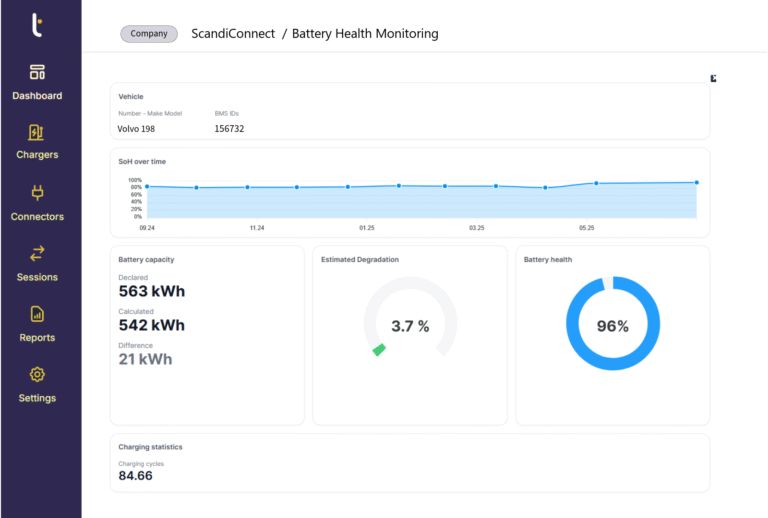Many electric fleet operators have felt frustrated when a bus can no longer go as far as it used to. Even though the schedule and routes stay the same, one vehicle might suddenly need a midday charge just to finish its shift. In most cases, the battery is the reason, not the charger, driver, or route.
Overvåking av batteritilstand for electric bus fleets determines if your operation runs as planned. Yet most fleets don’t know their batteries’ true condition. That’s a problem.
The Silent Variable in Fleet Performance
When I talk to fleet operators about Tenix, I often hear the same question: “Do I really need this?” It’s usually followed by, “We already have software that comes with our chargers.”
Charger software shows if electricity is flowing. But that’s where it ends. It doesn’t know if the vehicle is actually charging or if it’s charging enough to meet the next route. Here, in this article, I want to lay out the difference between the Smart Charging Operations Management Software offered by Tenix and the basic Charge Management Software that comes with your charger.
Every electric vehicle depends on its battery, which is both the main asset and the most likely point of failure. Batteries degrade over time. A bus with a 350 kWh battery may have only 94% capacity after a couple of years. That 6% drop seems minor, but it can mean finishing a route or returning early.
When range drops across a fleet, reliability quietly suffers. Vehicles may underperform, reserves get smaller, and charging schedules become tighter, putting pressure on operations.
Why Most Charge Management Systems Don’t Show It
Most fleet and charger software track immediate metrics such as charge success, start time, and stop time. These are important, but they don’t reveal how the battery is aging or what that means for performance over time.
There are also excellent standalone battery analytics companies, such as PowerUp who we are working with closely on several projects, that provide deep, cell-level analysis. Tenix Charge complements these by giving operators a real-time, daily overview of overall battery health. It highlights changes and trends that may need closer investigation, helping teams act before issues affect service.
Bringing Battery Health Into Your Charge Management System
With integrated battery health monitoring for electric bus fleets, Tenix Charge gives fleet operators continuous, automated insight into the real condition of every battery in their vehicles.
By analysing standard charging data such as energy delivered and the change in State of Charge, Tenix Charge estimates each battery’s effective capacity compared to its nominal capacity. Operators get a clear, trackable C-score that reveals performance over time and supports confident operational and financial planning.
There’s no need for extra sensors or complex integrations. Battery health insight is available directly in the system operators already use, simplifying decision-making and improving day-to-day control.
What the Nordics Have Learned After a Decade of Electric Buses
In the Nordics, electric buses have been in service for almost ten years. Operators there are starting to see how essential it is to understand battery health early. The condition of the battery affects not just daily performance, but also the residual value of the bus and how operators plan for future tenders. With accurate data, they can calculate total cost of ownership and know when each vehicle is nearing the end of its efficient lifespan.
We have seen how Smart Charging strategies can extend battery life by two to five years through practices like avoiding full charges and using slower overnight charging. With Tenix Charge, these strategies can be monitored and adjusted in real time to directly increase fleet longevity and efficiency.
With standard contracts lasting five to ten years, our customers are managing mixed fleets of vehicles, brands, and technologies. By year seven, some buses will already show significant degradation, which makes reliable battery data essential for planning routes, replacements, and budgets. As more operators adopt battery health monitoring for electric bus fleets, they can better plan for mixed technologies, manage long-term performance, and maintain consistent service level across all vehicles.
Protect Range, Warranty, and Safety
Battery health affects service delivery, warranty value, and safety. With Tenix Charge, operators gain the visibility to plan routes with confidence, detect degradation early, and support warranty claims with accurate data.
Don’t wait for range issues or missed shifts to appear. Start using battery health monitoring in Tenix Charge to keep your fleet reliable, data-driven, and ready for the future.





